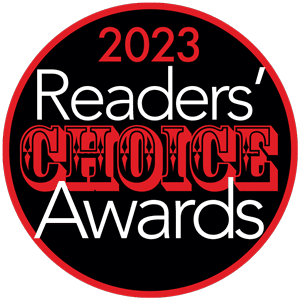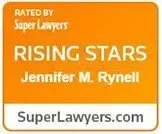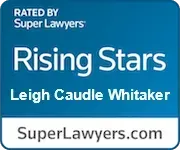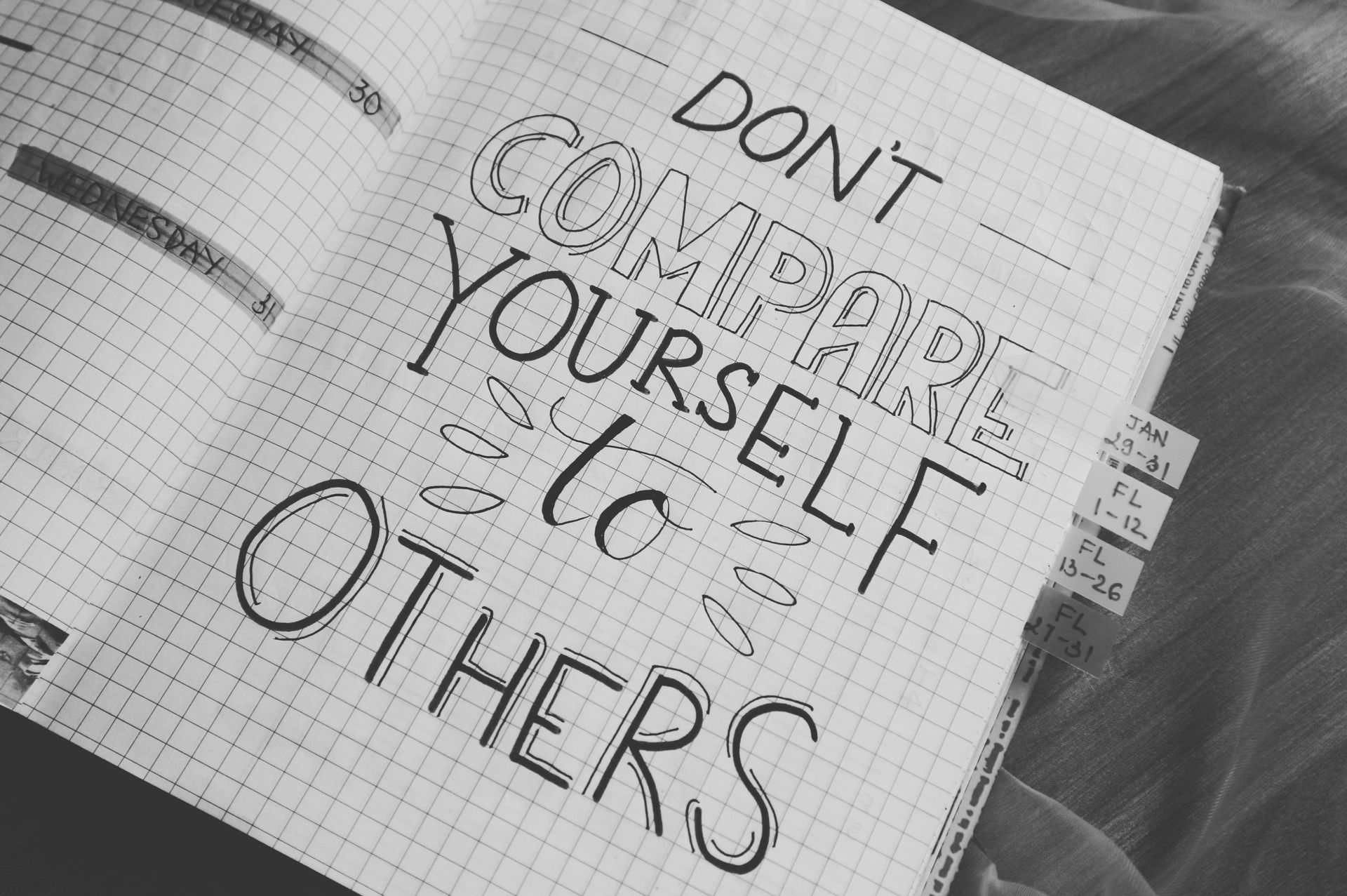INTELLECTUAL PROPERTY LAW FAQS: PATENTS, TRADEMARKS, COPYRIGHTS, AND INFRINGEMENT GUIDE
Understanding intellectual property can be challenging. These FAQs will help clarify key concepts and provide a better understanding of intellectual property protections.
Intellectual Property Law
What is intellectual property?
Intellectual property (IP) refers to creations of the mind, such as inventions, literary and artistic works, designs, symbols, and names used in commerce. It provides creators and inventors with exclusive rights to their creations, offering legal protection and incentivizing innovation. Key categories include patents, trademarks, copyrights, and trade secrets.
What is intellectual property due diligence?
Intellectual property due diligence is a thorough assessment of IP assets and their related risks and opportunities, typically conducted during mergers, acquisitions, or investment evaluations. It involves verifying ownership, validity, and value of patents, trademarks, copyrights, and other IP assets. The process helps identify potential issues, such as infringement claims or licensing restrictions, ensuring informed decision-making.
Why hire an intellectual property lawyer?
An intellectual property lawyer provides a range of services related to the protection and management of IP assets. These include filing and prosecuting patents, trademarks, and copyrights, as well as drafting and negotiating licensing agreements. They also handle IP disputes, such as infringement litigation, provide strategic advice on IP portfolio management, and conduct due diligence for transactions involving IP assets.
Patents & Novelty
What inventions are patentable?
Patentable inventions typically include new and useful processes, machines, manufactured items, or compositions of matter. They must be novel, meaning not previously known or disclosed; non-obvious, indicating that the invention is not an evident progression to someone skilled in the field; and useful, demonstrating practical applicability. Abstract ideas, natural phenomena, and laws of nature generally aren't patentable.
What types of patents can I get?
There are three primary types of patents:
Utility Patents: These are the most common and protect new and useful inventions or discoveries, including machines, processes, compositions of matter, or improvements to existing inventions.
Design Patents: Design patents protect new, original, and ornamental designs for an article of manufacture, focusing on the unique appearance of a product rather than its functional features.
Plant Patents: These protect new and distinct plant varieties that have been asexually reproduced, such as through grafting or cuttings.
How can a patent lawyer help me?
A patent lawyer can assist you by offering expertise in securing and protecting your invention's intellectual property rights. They can:
Draft and File Applications: Evaluate, prepare and submit detailed, accurate patent applications to the appropriate patent office, ensuring compliance with complex legal requirements.
Prosecute Applications: Respond to patent office actions and defend your application throughout the examination process.
Manage Patent Portfolio: Help strategically manage your patents to maximize their value, including advising on licensing, enforcement, and commercialization.
Litigate Patent Disputes: Represent you in litigation if your patent rights are challenged or if infringement occurs. They can also help resolve disputes through negotiation or alternative dispute resolution methods.
What rights does a patent owner have?
A patent owner holds exclusive rights, allowing them sole control over their invention for up to 20 years. They can legally prevent others from making, using, selling, or importing the patented product or process. Additionally, patent owners can license their invention for financial gain. This monopoly control provides a competitive advantage and safeguards against unauthorized exploitation. Enforcing their rights through legal action, patent owners protect their intellectual property and preserve its value in the marketplace.
What does novelty mean in a patent?
Patent novelty refers to the requirement that an invention must be new or original to be eligible for patent protection. In other words, for an invention to be considered novel, it must not have been publicly disclosed, published, or otherwise made available to the public anywhere in the world before the date of filing a patent application. If an invention lacks novelty, it cannot be patented because it does not meet one of the fundamental criteria for patentability.
Trademarks & Brands
What are trademarks and trade names?
Trademarks are distinctive signs, logos, symbols, words, or combinations thereof that identify and distinguish goods or services of one business from those of others. Trade names, on the other hand, refer to the official name under which a company conducts its business. While trademarks focus on protecting a brand's identity in the marketplace, trade names primarily identify a business itself.
How do I protect my trademark?
To protect your trademark, first make sure it isn't already being used by searching trademark databases. Register your trademark by applying with the government and providing proof of how it's used. Monitor for any unauthorized use to spot copycats or infringement. If someone copies your trademark, defend it by sending a warning or taking legal action.
How can a trademark lawyer help me?
A trademark lawyer can asist you in several ways:
Trademark Search: They conduct thorough searches to ensure your desired trademark isn't already in use and to identify potential conflicts.
Application and Filing: They help draft and file trademark applications accurately, ensuring your mark is well-protected.
Prosecution and Defense: They respond to USPTO office actions and defend your application if it's opposed, ensuring your rights are preserved.
Enforcement: They can enforce your trademark rights by sending cease-and-desist letters or representing you in infringement lawsuits.
Strategic Advice: They provide strategic guidance on managing and expanding your trademark portfolio, licensing, or navigating global trademark regulations.
What rights does a trademark owner have?
A trademark owner possesses exclusive rights to use their mark, differentiating their goods or services. This exclusivity allows them to legally prevent others from using confusingly similar marks in related categories. Additionally, trademark owners can license their mark for financial gain. By building brand recognition, they establish a unique identity in the marketplace, fostering consumer trust. Owners also combat counterfeiting, protecting consumers from fraudulent products. Through legal enforcement, trademark owners uphold their rights, seeking remedies for infringement. Overall, trademark ownership provides crucial legal protections and commercial opportunities, enabling owners to safeguard their brand's integrity and capitalize on its value.
Copyrighted Materials
What are copyrights?
Copyrights are legal protections that give creators exclusive rights to their original literary, artistic, and intellectual works. This includes books, music, films, software, sculptures, and other creative outputs. With copyright, creators can control how their work is used, reproduced, or distributed, allowing them to earn recognition and financial rewards from their creations. Copyright protection typically lasts for the creator's lifetime plus an additional period (usually 70 years) after their death.
How are copyrights protected?
Copyrights are protected in several ways. First, protection is granted automatically when an original work is created and fixed in a tangible form. Registering with the U.S. Copyright Office adds extra legal benefits, like being able to sue for specific damages in court. Adding a copyright notice on your work warns others that it’s protected and discourages unauthorized use. Finally, by issuing licenses and monitoring for infringement, you can enforce your rights and take legal action if needed.
How does a copyright lawyer assist me?
A copyright lawyer can assist you in several key ways:
Registration: They help register your work with the U.S. Copyright Office, ensuring your application is thorough and accurate.
Advising on Use: They offer advice on how you can use and license your work, helping you navigate complex issues like fair use, public domain, and licensing agreements.
Infringement Response: If your work is infringed upon, they can draft cease-and-desist letters or represent you in litigation to protect your rights and recover damages.
Contract Drafting: They draft contracts for licensing, sales, or collaborations to make sure your rights are clearly defined and protected.
Portfolio Management: They assist with strategic planning to maximize the value of your creative works, advising on how to grow and manage your copyright portfolio effectively.
What rights does a copyright owner have?
A copyright owner holds exclusive rights to their original creative works, encompassing literary, artistic, musical, and dramatic expressions. These rights empower owners with control over various aspects of their works' use and dissemination. They can reproduce, distribute, perform, and display their works publicly, including the creation of derivative works. In the digital age, copyright extends to controlling digital transmissions over the internet or other networks. Owners can license their works to others for specific uses, ensuring compensation for their creations. Through legal enforcement, copyright owners protect against infringement, safeguarding their intellectual property and preserving its integrity and value in the marketplace.
IP Licensing & Transactions
What is licensing?
Licensing of intellectual property (IP) is the process of granting permission to another party to use your IP assets, such as patents, trademarks, copyrights, or trade secrets, under specified conditions. The licensee typically pays the IP owner (licensor) a fee or royalty in exchange for the rights to use the IP. This arrangement allows the licensor to generate revenue from their IP while retaining ownership, and the licensee gains access to valuable assets that can improve their business. Licensing terms are often defined in a legally binding agreement that outlines the scope, duration, and permitted uses.
How do you draft a license?
To draft an intellectual property license, begin by clearly identifying the parties involved (licensor and licensee) and provide a precise description of the licensed intellectual property, including relevant registration details. Outline the scope of the license, specifying the rights being granted, the geographical coverage, and the duration. Describe the permitted use, detailing the licensee's allowed activities with the IP, and clarify the compensation structure, whether through royalties, lump sums, or other arrangements. Ensure the license includes quality control measures to maintain standards, states that the licensor retains IP ownership, and outlines conditions for termination or renewal. Include provisions for dispute resolution, confidentiality, indemnification, and amendments to safeguard both parties' interests.
How does a license attorney help?
A licensing attorney provides essential guidance throughout the licensing process. They begin by evaluating the intellectual property to ensure it is suitable for licensing, assessing its legal protection and market potential. Next, they draft tailored licensing agreements that clearly define the terms, protect rights, and reduce the risk of future disputes. During negotiations, they work to secure favorable terms for the licensor or licensee, considering aspects such as royalty rates, exclusivity, geographical scope, and quality standards. Furthermore, they ensure that the license complies with intellectual property laws and regulatory requirements. If breaches occur, they help enforce the agreement through cease-and-desist letters or legal action. Overall, a licensing attorney helps maximize the value of intellectual property while minimizing associated risks.
Trade Secrets & Protection
What are trade secrets in a business?
Trade secrets in a business are confidential and valuable pieces of information that provide a competitive edge. They can include formulas, practices, processes, designs, patterns, or any other business data not generally known to the public. For example, recipes, marketing strategies, manufacturing techniques, and customer lists are common types of trade secrets. To qualify for protection, this information must be actively protected through reasonable measures, such as nondisclosure agreements and secure storage, and its value must depend on its secrecy.
What must I do to keep a trade secret confidential?
To keep a trade secret confidential, follow these steps:
Identify Sensitive Information: Clearly identify which information is considered a trade secret to ensure proper protection.
Restrict Access: Limit access to trade secrets only to employees and partners who need to know this information for their roles.
Nondisclosure Agreements (NDAs): Require employees, contractors, and business partners to sign NDAs to legally bind them to confidentiality.
Employee Training: Educate employees on the importance of protecting trade secrets and how they should handle sensitive information.
Security Measures: Implement security protocols, such as encryption, locked storage, and secure networks, to prevent unauthorized access.
Exit Protocols: Conduct exit interviews and ensure former employees return all company materials and agree not to use or disclose trade secrets.
Monitor Compliance: Regularly audit your trade secret protection measures and update them as necessary to maintain confidentiality.
When should I consult a trade secret lawyer?
You should consult a trade secret lawyer in various situations where specialized legal expertise is crucial. For instance, they can help identify and evaluate what qualifies as a trade secret within your business, as well as its potential value. A trade secret lawyer can assist in setting up strong policies and protocols, such as drafting nondisclosure agreements and implementing security measures to protect sensitive information. Their guidance is invaluable in internal disputes where an employee or contractor may be misusing confidential data, or in cases where external threats arise from competitors or third parties who have obtained your trade secrets through improper means. Before entering partnerships, joint ventures, or mergers where sharing confidential information is necessary, their advice can ensure legal safeguards are in place. Finally, if you're involved in trade secret litigation or foresee potential disputes, their assistance can be critical to your defense or pursuit of justice.
Trade Dress
What is a trade dress?
Trade dress refers to the overall visual appearance and design of a product or its packaging that signifies the source of the product to consumers. It includes the shape, color scheme, texture, graphics, or even the layout of a store that distinguishes it from competitors. For example, the unique shape of a bottle, the specific design of a storefront, or distinctive product packaging could be protected as trade dress. To be protected, trade dress must be distinctive, non-functional, and recognized by consumers as identifying a particular brand or product source.
What are samples of a trade dress?
Examples of trade dress include:
Product Packaging: The unique shape, color, and design of Coca-Cola's contoured bottle.
Product Design: The distinctive appearance of the Apple iPhone, including the layout of its icons and the shape of the device.
Restaurant Décor: The layout, color scheme, and uniform style of the Hard Rock Cafe or the distinctive interior of the Chipotle restaurant chain.
Storefronts and Displays: The distinctive storefronts of retail stores like Lush, which uses colorful soap displays and rustic wood shelving.
Service Design: The recognizable design elements in the delivery service uniforms and vehicles of companies like FedEx or UPS.
How can a trade dress lawyer help?
A trade dress lawyer specializes in protecting and defending the unique visual appearance of a product or service, which can include its packaging, design, color scheme, and overall presentation. Here's how a trade dress lawyer can help:
Registration and Protection: They can help you register your trade dress with the appropriate intellectual property office (like the USPTO in the United States), ensuring that your unique design elements are legally protected. This registration helps establish your exclusive rights to use the trade dress and prevents others from copying or imitating it.
Enforcement: If another party infringes on your trade dress rights by using a similar or identical design, your lawyer can take legal action to stop the infringement. This may involve sending cease-and-desist letters, filing lawsuits, or initiating other legal proceedings to protect your rights.
Defending Against Allegations of Infringement: Conversely, if you're accused of infringing on someone else's trade dress rights, a trade dress lawyer can help defend you against these allegations. They can analyze the situation, assess whether infringement has occurred, and develop a strategy to protect your interests.
Trade Dress Litigation: In cases where infringement disputes cannot be resolved through negotiation or alternative dispute resolution methods, a trade dress lawyer can represent you in litigation. They'll advocate for your rights in court and work to secure a favorable outcome, whether through a settlement or a court judgment.
Due Diligence and Counseling: Before launching a new product or service, it's important to ensure that your design doesn't infringe on existing trade dress rights. A trade dress lawyer can conduct due diligence to assess the risk of infringement and provide guidance on how to avoid legal issues while still achieving your design objectives.
Licensing and Transactions: If you want to license your trade dress to others or enter into agreements involving the use of someone else's trade dress, a lawyer can help negotiate and draft contracts to protect your interests and ensure that the terms are fair and enforceable.
Intellectual Property Infringement Defense
What should I do if I'm accused of infringing someone else's intellectual property rights?
If you find yourself accused of infringing someone else's intellectual property rights, swift and strategic action is crucial. Begin by meticulously reviewing the allegations and gathering all relevant documentation to understand the scope of the claims against you. Seeking immediate legal advice from an experienced intellectual property attorney is paramount to assess the merits of the accusations and formulate an effective defense strategy. Engage in transparent and constructive communication with the accuser while refraining from admitting liability or engaging in confrontational behavior. Explore potential settlement options to resolve the dispute amicably, and prepare a thorough response addressing each specific claim raised against you. Throughout the process, diligently follow the guidance of your legal counsel to safeguard your rights and interests effectively.
What defenses are available in intellectual property infringement cases?
In intellectual property infringement cases, defendants may employ various defenses to challenge the allegations of infringement. These defenses can vary depending on the type of intellectual property involved (e.g., patents, trademarks, copyrights) and the specific circumstances of the case. Here are some common defenses used in intellectual property infringement cases:
Invalidity: The defendant may argue that the intellectual property right asserted by the plaintiff is invalid. For example, in patent cases, the defendant might claim that the patent is invalid because it lacks novelty, non-obviousness, or sufficient disclosure. Similarly, in trademark cases, the defendant might argue that the trademark is generic or descriptive and therefore not eligible for protection.
Non-Infringement: The defendant may assert that their product or work does not infringe on the plaintiff's intellectual property rights. This defense typically involves demonstrating that there are differences between the accused product or work and the allegedly infringed intellectual property, such as variations in design, functionality, or expression.
License: The defendant may argue that they have a valid license or permission from the plaintiff to use the intellectual property in question. This defense typically requires providing evidence of a written agreement or other documentation establishing the existence and scope of the license.
Fair Use: In copyright infringement cases, the defendant may assert the defense of fair use. Fair use is a doctrine that allows for the limited use of copyrighted material without the permission of the copyright holder for purposes such as criticism, commentary, news reporting, teaching, scholarship, or research. Whether a particular use qualifies as fair use depends on factors such as the purpose and character of the use, the nature of the copyrighted work, the amount and substantiality of the portion used, and the effect of the use on the potential market for the copyrighted work.
Estoppel: The defendant may argue that the plaintiff is estopped from asserting their intellectual property rights against the defendant due to the plaintiff's prior actions or statements. For example, if the plaintiff previously allowed the defendant to use the intellectual property without objection, the defendant may argue that the plaintiff is now barred from asserting infringement claims.
Statute of Limitations: The defendant may assert that the plaintiff's claims are barred by the statute of limitations, meaning that the plaintiff waited too long to file suit after discovering the alleged infringement.
Unclean Hands: The defendant may argue that the plaintiff has engaged in improper conduct related to the intellectual property rights at issue, such as fraud, misrepresentation, or other unethical behavior. This defense is based on the principle that a party who seeks equity must come to the court with clean hands.
First Sale Doctrine: In certain cases involving the sale of copyrighted works, the defendant may assert the first sale doctrine as a defense. This doctrine allows individuals who lawfully acquire a copy of a copyrighted work to resell or otherwise dispose of that copy without the copyright holder's permission.
Wilson Legal Group's IP Attorneys provide exceptional service in intellectual property protection and litigation across Texas.
Award Winning
Recognized in the legal industry as dedicated board-certified lawyers and Rising Stars.
Expert Team
Your project will be handled by legal experts every time. You will have the most experienced attorneys working for you.


















